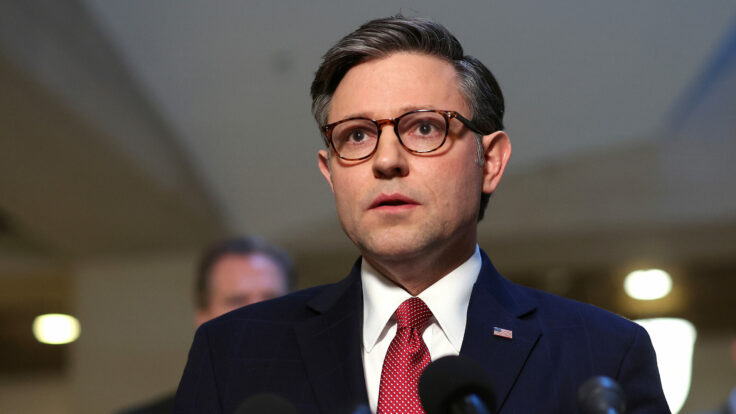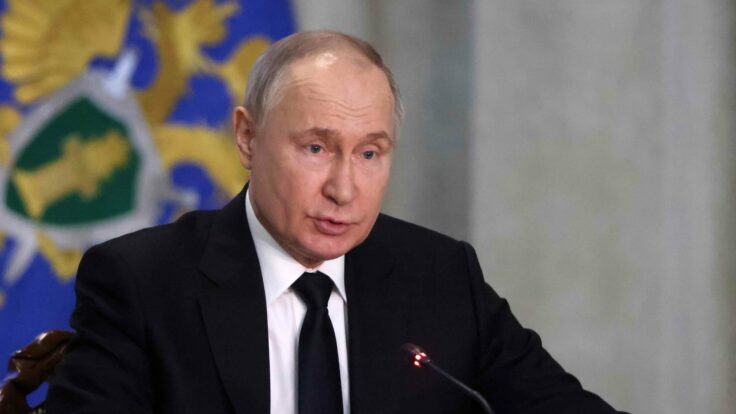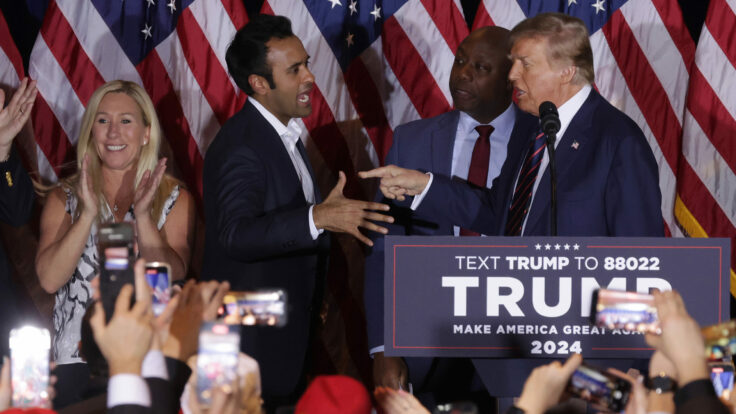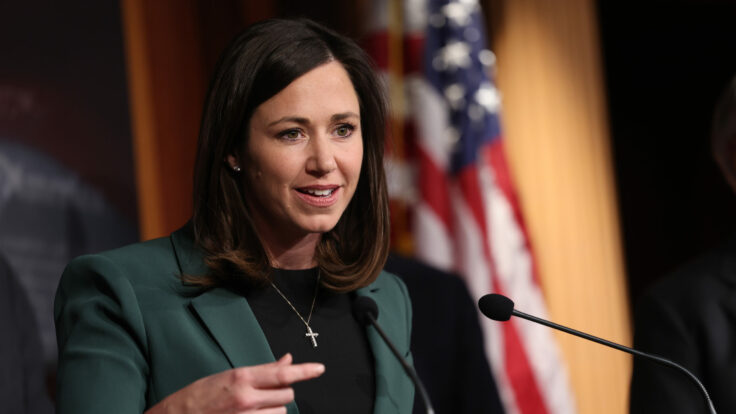In May 2022, a racist traveled several hours to kill 10 people at the Tops Friendly Market in a Black neighborhood in Buffalo. Last week, he was sentenced to life in prison. What I remember most about the event is that I could barely process it at the time. I was exhausted by this temporarily-latest instance of America’s oldest story: crush Black resources, Black community, Black bodies, and Black life.
I couldn’t wade into the details at the time. I wrote recently of my decision not to watch the video of Memphis police beating to death Tyre Nichols. I believe my determination there was hardened after Buffalo. Instead of reliving that massacre, I sought out a counter-narrative. Within weeks of the incident, I found myself in my hometown of Washington, D.C., and the closest place I could go to process the tragedy was the National Museum of African-American History and Culture.
I reached out to a friend, a curator at the museum, texting that I needed to see “anything healing, joyful, inspiring. The opposite of Buffalo.” I had been to the museum once before and was floored by the intensity of the experience. It should be mandatory for all Americans or would-be Americans. I would personally pay for every presidential candidate to spend a day in that building. It’s beyond a collection of artifacts. It’s a physical, informational, and emotional journey chronicling the story of America through the story of the people still treated as un-American despite building and defining so much of this country and its culture.
That story begins several floors underground, with the birth of the trans-Atlantic slave trade. As you wind your way up the exhibit, you climb through epochs of Black history in the United States: enslavement, the Civil War, Jim Crow, the Black Codes, the Civil Rights Movement. Emmett Till’s family donated the casket he was buried in to the museum. (His body was exhumed and reburied in a new casket in order to re-open the case into his murder.) By the time you reach ground level, even the apparent triumph of the Obama presidency isn’t enough to balance the weight of the previous horrors. So the designers kept building up, several floors above ground, with exhibits on arts, music, and culture. These upper floors showcase much of the creativity that Black folks have built atop our trauma. I needed to remember that there’s more to the Black experience than struggle, pain, murder, rejection, and death.
So on that visit, I focused on liberation. I spent time with Public Enemy’s early hip-hop. I mentally boarded George Clinton’s “Mothership” through the art of Jefferson Pinder, who celebrated Parliament-Funkadelic’s music, NASA’s boldness, and Black people’s ability to transform all in a single sculpture. I stood between Amy Sherald’s portrait of Breonna Taylor, murdered in 2020 by the Louisville Metro Police, and Bisa Butler’s quilted texture portrait of a young Harriet Tubman. I thought about the fact that Breonna and Harriet both worked to save lives, and here they were staring into each other’s eyes from a place beyond death. I cried tears of gratitude.
“Long Live the Jefferson 10”
That museum visit was on my mind months later when I traveled to Buffalo to speak at Daemen University. At the airport, I was greeted by a Black man who runs a local non-profit and has lived in Buffalo for 30 years. I asked my liaison if he would take me straight to the Tops supermarket where the massacre happened, so long as it wouldn’t be too painful for him. He agreed and let me out in the parking lot to have whatever moment I was seeking.
I didn’t really know what I was looking for. I didn’t really have a plan, either. But after months of avoiding the pain of this tragedy, I felt I had to see and feel the energy of the space myself. I needed to be present and honor the lives taken. I walked to the corner where the largest memorial sat and took in the view of the ground covered with wreaths, flowers, candles, and signs with messages like, “Long Live The Jefferson 10.” I lifted my eyes slightly and saw larger-than-life-sized portraits of the 10 victims. They looked like people I know, people I’m related to, or people I had seen on the walls of the National Museum of African-American History and Culture a few months earlier. This time, I cried tears of rage.
It’s not the first time I’ve been to such a memorial. When I visited Charlottesville, in 2018, I went to the site of Heather Heyer’s murder at the hands of a white supremacist who used his car as a weapon. When I visited Minneapolis-St. Paul, in 2021, I walked to George Floyd Square where I mourned and meditated on the unnecessary killing and wholly necessary affirmation of life that followed in that space. I wondered, what is it about my travel schedule that puts me in such close proximity to the sites of racist murders and massacres? The answer has nothing to do with the uniqueness of my itinerary and everything to do with the ubiquity of such occurrences across space and time. I am not the common denominator in these sets of tragic fractures; America is. We are just the kind of country where a memorial to victims of racialized violence can be literally anywhere.
That Buffalo visit opened new wounds even as it brought mournful closure. So here I am, still hurting and tired, believing less in the promise of America than usual but refusing to cede all hope or action for a better future. I remain committed to helping create a future that is not defined by racism while I simultaneously tire of constantly traversing terrain defined by considerations of racism. I’m in an emotional and logical Möbius strip, trapped in an infinite loop, searching for what it means to be free.
The Black Art of Escape
I am at a crossroads. For Black people in America, what does the pursuit of freedom truly require? I remain hopeful because I’m predisposed to hope, and because it’s how I stay sane. I remain rageful because the circumstances for Black people in this country call for rage.
After 2020—“the tide” as I’ve called it—I saw many parts of society embrace the statement “Black Lives Matter.” I was brought in to speak with schools and companies about a better story we could co-create that guaranteed we had a better shot at achieving liberty and justice for all. I’ve also seen the well-funded backlash fueled by resentment and fear. That backlash has been manifested in, among other things, the January 6th insurrection, the prohibitions against “CRT,” and the efforts to stop “wokeness.” Reverend Dr. Jacqui Lewis said it best: So many rants against “wokeness” are thinly veiled rants against Blackness.
All of this is draining, and I confess that I’m tired of fighting for freedom. I sometimes don’t feel I’ve earned the right to this fatigue, and then I feel bad for not always being down to fight, but when I say I, I’m not just talking about a singular me. My cells, genes, and entire lineage, passed down through history, are tired of fighting for freedom. Somewhere, deep inside of me, I’ve been hearing a voice saying, There must be another path, beyond the fight. I need to find new ways to be free.
I’ve found it hard to articulate this feeling of being trapped, so I brought it up in a recent conversation with the writer Carvell Wallace. Last fall, we were both in Paris and met at Brasserie Lipp, where James Baldwin used to hang. I chose the location, hoping perhaps for ancestral inspiration. When I raised my frustration with Wallace, he said instantly, “Oh, you mean the liberation paradox!” as if it were some well-known episode of Star Trek I had missed. He defined it as “the temptation to focus on the actions of your oppressor in the attempt to be free from your oppressor.” Yeah, that’s it. That’s what’s got me twisted up in knots.
Here’s what I think it means for me. I’ve devoted a decent amount of my life’s energy to topics of racism (less, please!) and justice (more, please!). So much of my professional life—my speaking, writing, talking and hosting—revolves around themes of racism reduction. Meanwhile, much of my personal life revolves around themes of racism avoidance, with the clear knowledge that my existence may depend on me successfully perceiving and navigating racist threats. I’ve so internalized these habits, I rarely consciously consider them. They are just how I live, but my self-awareness of this pattern has grown during these past few years. I’ve realized something very simple: when I engage so much in topics of racism and racial justice, I’m centering whiteness and de-centering myself. That feels self-defeating.
Living under the weight of someone else’s expectations is exhausting. Many of us with parents know what that is like, and I’m realizing the massive degree to which I’ve been living with a similar sense of burden. I’ve adjusted my behavior based on what white people do, or might do, think or might think. I’ve shared thoughts and possible solutions that depend on white people changing. Yes, I want enlightenment for white people. I just don’t want my own growth to depend on it. I don’t want my sense of self to be dependent on white people recognizing my full self. To do so is to subscribe to the idea that, “If white people just free their minds of small-minded racist ideas, then we can be free too!” In that worldview, Black liberation (or any BIPOC liberation) can only exist as a function of white liberation. We become dependent variables in a white-dominated formula. Not only is that exhausting, it is by definition not freedom. If I can’t be free until you allow it, then I can never be free.
So, I am feeling my way to another path. In 2019, my friend Casey Gerald wrote one of the best essays I have ever read, titled “The Black Art of Escape.” In it, he conceives of a place of freedom and sanctuary for Black people that is not a dependent variable in a white formula. His piece lives in the tradition of other freedom thinkers, writers, and fighters like Malcolm X, Angela Davis, Audre Lorde, and more. Now I find myself experiencing my own version of a similar epiphany with great caution.
I will not deny the reality of racist systems. I’ve known Black people across the left-right political spectrum who’ve deployed this strategy, and it seems to work for some. Maybe they are better at compartmentalizing than I am. Maybe they are insulated by wealth. Maybe they are better at lying to themselves. Whatever the case, it doesn’t work for me. I can’t unlearn or unsee the history and present of this country. I can’t ignore the measurable, negative consequences of the anti-Black bias we’ve embedded into our healthcare, legal, economic systems and more. However, there is a subtle yet meaningful difference between acknowledging the reality of racism and allowing racism to define my entire reality. There’s an element of validity to the idea that we further empower a racist system by exclusively focusing our attention on the system’s negative outcomes rather than on the outcomes we actually want. If I see racism everywhere and think the only way out is to change others, then I may be dooming myself to be forever stuck.
Resolving the Paradox
How do the oppressed get free without focusing on the actions of their oppressors? How do we break the obsession with finding freedom through someone else’s acceptance while also acknowledging the very real systems in place that make freedom so elusive for so many? How do we resolve the liberation paradox? Either stop focusing on white people, and fail to change those who built or benefit from the system (thus remaining un-free) or stay focused on changing them, and achieve my freedom only if they change (which doesn’t feel like freedom).
I think the resolution is to reject this binary choice and instead explore both options at the same time. It’s kind of a quantum journey where we openly acknowledge that particles can occupy multiple positions at the same time. I know what it looks like to focus on the racist system. We all have heard that we need to “change the system.” But what does it look like to explore other, parallel paths to freedom beyond the ones focused on whiteness? This is the space I’m increasingly trying to shift my attention to, and here’s some of what I’ve been discovering.
Take care of ourselves. Audre Lorde famously said that “Caring for myself is not self-indulgence, it is self-preservation, and that is an act of political warfare.” But Black people in America have often been denied the time or resources to care for ourselves because we’ve been so busy caring for others, specifically white people. That’s a literal and figurative statement brought to clarity by comments that author and professor Kiese Laymon shared in a recent interview: “The question is, ‘Who’s going to tend to the white children in this country?’ You’ve been asking us to do it for centuries, and we’ve done it, but we’ve got to tend to ourselves as well.”
He later added, “When I’m taking care of white children, I’m not taking care of the child inside my heart.” It’s hard to take care of the child inside our hearts when we are so preoccupied with white acceptance or when the stories we tell and hear about ourselves center so much on our own tolerance for suffering rather than care. We hear about the Black family that turns the other cheek when their relative is murdered. We see portrayals of the stoic and strong Black mother, sacrificing everything for her children. We listen to songs about the Black boy, “manning up” well before it’s time to do so. But there are also stories of self-love and self-care to tell.
I’m both advocating for, and noticing, an increase in those different stories, of healing and self-care by and for Black people. One example is Zee Clarke’s new book, Black People BREATHE. It’s filled with mindfulness and breathwork practices to help BIPOC folks heal from racism, while the title itself refutes the “I Can’t Breathe” struggle refrain we know all too well. I’m seeing more Black yogis and meditation instructors like my friend Light Watkins and my sister Belinda Thurston, who work to make wellness truly accessible. I mean, if there’s people who really need the mindfulness and healing thing, people who need deep tissue massage and all that, it’s Black people! Bring it on. I’ll take my reparations down payment in massage credits, thank you.
Meanwhile, my work on PBS’s America Outdoors has heightened my awareness of another form of self-care: Black people embracing the healing power of nature. Because of the show, I’ve met people like James Edward Mills, of The Joy Trip Project, and Carolyn Finney, author of Black Faces, White Spaces: Reimagining the Relationship of African Americans to the Great Outdoors. Thanks to an intentional attention shift, my social media feeds are filled less with the images of Black death than they are with images of Black life—in the form of hiking, camping, surfing and more through hashtags like #BlackMenHiking, #OutdoorAfro, and #GirlTrek.
Seek out joy constantly. I beam every time I see an expression of “Black Girl Magic” or “Black Boy Joy.” Recently, I learned about an L.A. exhibit of the S.M.I.L.E.-ing Boys Project and I broke out in a giant smile just reading the mission: to see images of smiling black boys normalized across popular media. Then there’s the viral TikToks of Black men frolicking. How often do you see the image of a Black boy or man smiling with joy? We are so used to a grimace, frown, or ice cold stare. We need to experience this more and see it reflected more in the culture we consume.
I’ve also been trying to do that in my own work. We’ve just started releasing the fourth season of my podcast, How To Citizen, and we kick things off with writer, facilitator, and activist adrienne maree brown. Besides being a fellow badass Virgo, adrienne and I bonded over the role of joy for all of us, especially those involved in movement work. She wrote the book Pleasure Activism: The Politics of Feeling Good, so she would know. She shared her rituals around singing in a choir as a practice of joy she’s prioritizing. She’s writing poetry and fiction. It was powerful to hear about this evolution of a hardcore activist into someone finding a more full expression beyond the narrative of struggle.
When I get a chance to speak to young Black people in schools, I make a point of stressing this. I know the pressure that comes with inheriting a legacy of “the fight for freedom,” but I tell them we deserve to experience more than a fight. We deserve to live. What’s the point of saying, “Black Lives Matter,” if that life is defined solely by struggle? This requires a bit of a leap, a break from the pattern. But I’ve been learning to practice being free so that when I’m free, I know how to be, so that freedom becomes more than a mere possibility. It’s an experience I can have right now.
Ultimately, I want us all to imagine better. That’s a phrase I learned from my friend Andrew Slack. For lack of a better term, I’ll call him a narrative strategist. Back in 2014, he channeled the ancient work of myth-making and storytelling about a world yet-to-be into a “civic imagination studio” called the Imagine Better Network. Andrew was one of the first people I personally knew who took seriously the power of stories and imagination, not to escape the world, but to create a better one. In that work he was continuing in a tradition that people like Baldwin also carried. In his poem, Imagination, Baldwin wrote, “Imagination / creates the situation, / and, then, the situation / creates imagination,” returning us to that Möbius strip. Our experience doesn’t have to be linear. We don’t have to wait.
The circumstances of Black people in America suggest we will never be free if that freedom depends on others. So we must imagine different circumstances where our freedom doesn’t lay in a vague and distant future but is something we can access right here, right now.
These thoughts are a work in progress: the freedom I seek is not a state, but it too is a process. There’s no single shared state of freedom, no universal “Liberation Day” that we could mark with the toppling of a statue or the passing of a law. And don’t get me wrong, we need to topple statues and pass laws. I’m also not saying that white people don’t have work to do. They do! I’m just deciding to take less responsibility for them and more responsibility for myself. I think this is key. I think we get free the moment we realize that the power to do so lies with us.
That’s a liberation paradox I can embrace.
Happy Black History Month.

















